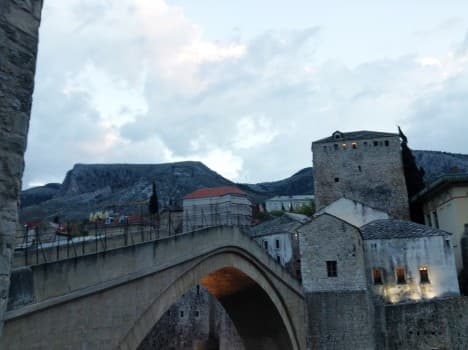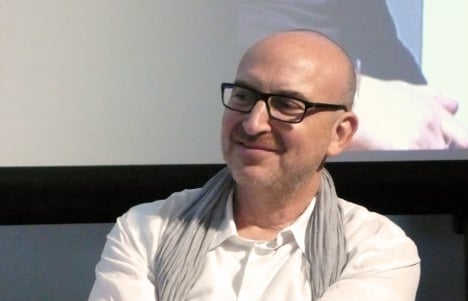Art, architecture, and migration: unique courses in Stockholm
A unique course at the Royal Institute of Art in Stockholm is captivating expats and Swedes alike with its cutting edge – and sometimes controversial – interpretations of architecture, migration, and everything in between. The Local finds out more.

What do glitches in time, “cryptoflora”, and sound sketches have in common?
“Each student completes an individual project – a mini PhD, as I like to call it,” says Professor Peter Lang. “The scope is to help students develop new means of communicating geared towards a public audience – not writing academic papers.”
Lang, a New York native (and expert in 1960s Italian radical architecture), is Professor of Architectural Theory and History at the Royal Institute of Art in Stockholm (Kungl. Konsthögskolan). And for the past few years he’s been turning custom on its head with his unique “research labs”.
“I seek professionals each year to join the programme, those who are working in architecture, art, urban planning, and similar fields,” Lang says. “Those who have experience or are involved in programmes like UNHCR, or in conflict zones, refugee centres or border zones would also be great for this. It’s not just about historical case studies or field work; it’s also about communicating visions using different media.”
Essentially, Lang’s next Research Lab – R-Lab: Architecture/Cities/Utopia – is a post-graduate course unlike any other. Students – or participants, as Lang likes to call them – cross borders both literally and metaphorically, analysing history, critical theory, and media studies in urban contexts and presenting their findings in new and unique ways.
Sound open-ended? A bit vague? That's because it is: participants and their projects vary vastly.
“Each person develops a personal project and we work on expressing it through another medium," Lang explains, illustrating the point with some examples of projects by current participants.
 Professor Peter Lang from Royal Institute of Art in Stockholm (File photo)
Professor Peter Lang from Royal Institute of Art in Stockholm (File photo)
He describes one participant who is looking at how 'hyperlocal' collaboration might affect societies in the future, while another is using sound to heal people who've gone through traumatic experiences. Another project is looking at what happens next for a site in Malmö where a Roma encampment once stood.
In addition to the personal projects, each year the course has an overarching theme. The group starting the programme in the autumn of 2016 will work with a theme that participants will probably find familiar.
“This year we will be exploring issues of divided population and migration,” Lang says of the course’s main theme: Missing Europe: Baltic and the Balkans.
“We will be working with architecture, cities, and utopias, and focusing on Mostar as a case study. It’s a divided city if there ever was one.”
READ MORE: Information about R-Lab at the Royal Institute of Art
Mostar, a vibrant city still struggling to rebuild after years of traumatic war and bombing, bears the deep, jagged scars of ethnic clash and segregation. A river runs through the city centre, and the Catholic Croats stick to the west side while the east is distinctly Muslim Bosniak.
Essentially everything is split down the middle: the city has two universities, two electrical companies, two phone companies, and two post offices.
Students will not only discuss the city’s rifts, both architecturally and culturally, but will take a field trip to Bosnia and Herzegovina to experience the divide first hand, thanks to a partnership which Stockholm's edgy, contemporary Färgfabriken, which in turn has brought in the Centre for Architecture, Dialogue and Art in Mostar.
Indeed, Mostar’s tense environment has also sparked a new generation of experimental urban initiatives, a new type of culture, and an eccentric, determined new energy flows beneath the cobblestoned surface of the old city.
And the city’s recent history is certainly relevant in today’s Sweden, which in 2015 took in more refugees per capita than any other EU nation, and integration has become an everyday challenge. Segregation and homelessness in Sweden have increased, which this year’s students demonstrated while working with Index—The Swedish Contemporary Art Foundation on their project dealing with Polish Architect Oskar Hansen and game theory.
“In Mostar we will explore how divided cities can be understood – and then we will bring that understanding back here, to cities in Sweden, creating new solutions that are more positive,” Lang says.
The course is given entirely in English – “I’m the only professor who doesn’t speak any Swedish,” Lang laughs – and the class meets during the evenings, making it easy to combine with full-time employment.
“We are seeking a broader range of potential participants,” Lang says. He adds that many foreigners in Sweden don’t realize there are English-language programmes available – and that, on certain types of residence permits, they’re tuition-free.
Current participants come from all walks of life and from countries around the world, including Sweden, Denmark, the UK, the US, Italy, Poland, Australia, and Spain.
Apply for the course or read more at the Royal Institute of Art
This article was written by The Local and sponsored by the Royal Institute of Art
This content was paid for by an advertiser and produced by The Local's Creative Studio.

Join the conversation in our comments section below. Share your own views and experience and if you have a question or suggestion for our journalists then email us at [email protected].
Please keep comments civil, constructive and on topic – and make sure to read our terms of use before getting involved.
Please log in here to leave a comment.